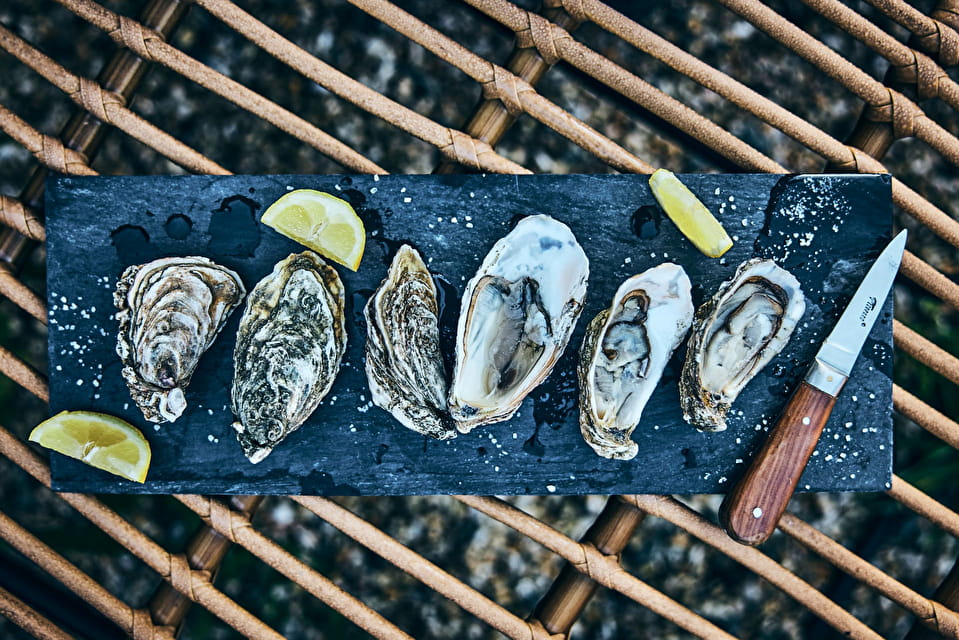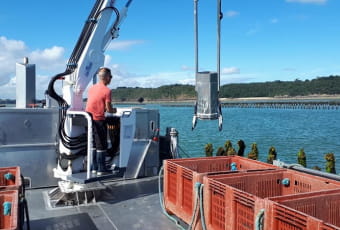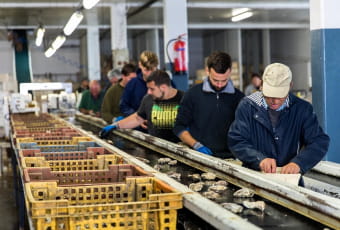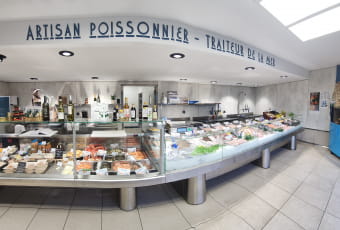
Immersion with our Breton oyster farmers!
Twelve ! This is the number of grands crus that can be found on the Breton coast, in the many oyster beds that line it. Renowned for its seafood, the Britain is among the largest oyster producing regions in France. Flat or hollow, raised in the open sea or suspended, the oyster is a concentrate of iodized flavors that delights the greatest gourmets as well as fine gourmets. Let's meet our oyster farmers: immersion in 3, 2, 1...
Oysters in Brittany: quite a story!
If it is today of all the festivals, this seafood was already the happiness of the Romans, Greeks and Celts who delighted in it in the time of Antiquity. Experts tell us that it was originally the dish that was produced on the coast of Brittany before falling victim to a fatal disease.
The Portuguese oyster, called hollow, then replaces the original. But the fate seems to persist! In the 60s, it was gill disease that decimated pearls from Portugal, giving way to Japanese shells. Straight from the Pacific, this cupped oyster adapts to any type of environment and imposes itself until it becomes the most cultivated in the world.
Among the Bretons, the plate is resisting and the one called the Belon still arouses all the desires today!
And you, which one do you favor? The round, the elongated one, with a slight nutty or iodized taste?
🧐 The minute etymology
Ostracism (noun): Hostile rejection by a community of one of its members
This word has its origins in antiquity, where the flat part of the shell was used as a ballot. The name of the politician to be banished was engraved on it. A rather salty anecdote, isn't it?
Breeding and calibration: step by step!
While visiting the oyster production near Dinan, we listened to the oyster farmers share their know-how with us. And guess what? 3 to 4 years of breeding are necessary before the oysters land on your plates. What a surprise !
Long-term work to make these famous seafood a perfectly iodized delight! In suspension, in the open sea or raised, there are different farming techniques. Most of the oyster farmers we met on our coasts practice raised farming. We take you behind the scenes of Breton oyster production!

1- Capture the spat
To raise these tasty seafood, let's start by capturing the spat (set of oyster larvae)! The waters of Brittany being too cold (don't look surprised…) and the current too strong, the capture (action which consists of collecting small oysters in the process of development) is not carried out in Brittany. The spats are then transported on truck collectors to our beautiful coastline!
2- Pocketing
We are witnessing the very first steps of seafood among our oyster farmers. Before our curious eyes, the oysters are arranged in pockets and placed on raised tables. We can never be too careful! The producers tell us that for 3 to 4 years, they regularly turn their pockets. And this for 4 good reasons:
- Avoid Algae Bloom
- Allow all oysters to see the sun
- Harden the shell of oysters
- Prevent them from sticking to each other to facilitate sorting later
A titanic task since it will be necessary to watch over these small marine pearls on a daily basis and replace the pockets as they grow.
3- Refining for a true taste of the terroir
It's harvest time! The bags are detached to carry out sorting and refining. We start with deception, an operation allowing the shellfish to get used to being closed out of the water. They are then placed in a basin for 48 hours before decanting. An oyster farmer explains to us that this technique aims to empty the oyster of its impurities such as mud and sand. When we tell you that it’s a colossal job!
4- Calibration, packaged, weighed
In manual or mechanical mode, everyone has their own technique! Grading is used to assign a number to oysters according to their size. The caliber varies from 0 to 5 for the hollow ones, and from 000 to 6 for the flat ones. Those who have already been fooled know it: the smaller the number, the bigger the oyster! A little advice from our oyster farmers: choose a medium size (3 or 4). Once the calibration has been carried out, the producers place the seaweed in the baskets before filling them with a dozen shells laid flat, the hollow valve downwards. We get one on the way!



3 oysters, 3 atmospheres at our producers
The first thing to do when you arrive in Dinan – Cap Fréhel? Succumb to an iodized tasting! And with the 3 varieties produced here, the choice is yours!
- Fleshy and iodized: the one called L'Arguenon is an oyster that has been protected by the tip of Saint-Cast-le-Guildo and the Ebihens archipelago. A subtle blend of sea and river that gives it a very special flavor!
- Crunchy: subject to strong tides, La Fréhel, like the Cap of the same name, is a marvel! It is recognized by the light color of its shell and the length in the mouth of its crunchy flesh.
- Cradled by the swell: The “special brewed sea” is raised in suspended pockets, swaying according to the swell and the tides. We love its iodized taste!
For us, it will be a hamper of each!

👀 Where to find a hamper?
Visit our oyster farmers & fishmongers:
- The Saint Cast, 35 rue de la Resistance, 22380 Saint-Cast-le Guildo - 02 96 80 07 21
- Fishmonger Le Moulin De La Mer, 16 place du Gal de Gaulle in Matignon - 07 72 42 14 14
- The Wonders of Cape Town : La Saudraie, 22240 Plévenon, 06 67 70 46 22 (Shop)
- Shellfish Company Roy, ZA des Basses Terres 22750, St-Jacut de la Mer, 02 96 27 72 86
And to immerse yourself (truly) in the life of an oyster farmer, go to La Ferme Marine:
The Marine Farm : L'Aurore, Route de la Corniche, 35260 Cancale, 02 99 89 69 99
💡 Did you know? The oyster is hermaphroditic. She is female the first year and then changes sex after each season. You now have something to impress your guide!
Iodine in the mouth
Among the Breton specialities, the oyster is a particularly appreciated dish. Well Named ! So before moving on to the tasting, we asked our oyster farmer friends for advice! And since we're in a generous mood, we'll share them with you!
- You've opened the oyster, that's a good start. Now be sure to drain the first water. If the mollusc replenishes its water, then it is very fresh. Word of Breton!
- During the summer period, the sea warms up and the oysters enter the breeding season. If milky oysters are not your cup of tea, enjoy them instead in low season (you know, that famous story of months in “r”)!
- With lemon, shallot vinegar, hot or au gratin… They can be enjoyed with all sauces. But if there is one rule for savoring these Breton treasures, it is to have rye bread and a glass of white wine* on the table.
→ Find here our best addresses where to taste Breton oysters!
*alcohol abuse is dangerous for your health, consume in moderation


A pearl with multiple benefits
If oysters are so prized by nutritionists and dieticians, it is because they have many virtues and are rich in essential nutrients. But then, what are the benefits of this shellfish with its inimitable iodized taste?
- It contributes to the reduction of bad cholesterol
- It reduces the risk of cardiovascular disease
- It is rich in vitamins A, B12, B2 and B3 and thus prevents vitamin deficiencies
- It contributes to good cell regeneration, tissue renewal and energy production
- It is rich in iron, phosphorus, zinc, copper and selenium, which helps prevent anemia, stimulate the immune system and contributes to the good health of bones and teeth.
Something to comfort you in the idea of ordering your hamper for the Christmas and New Year !





















